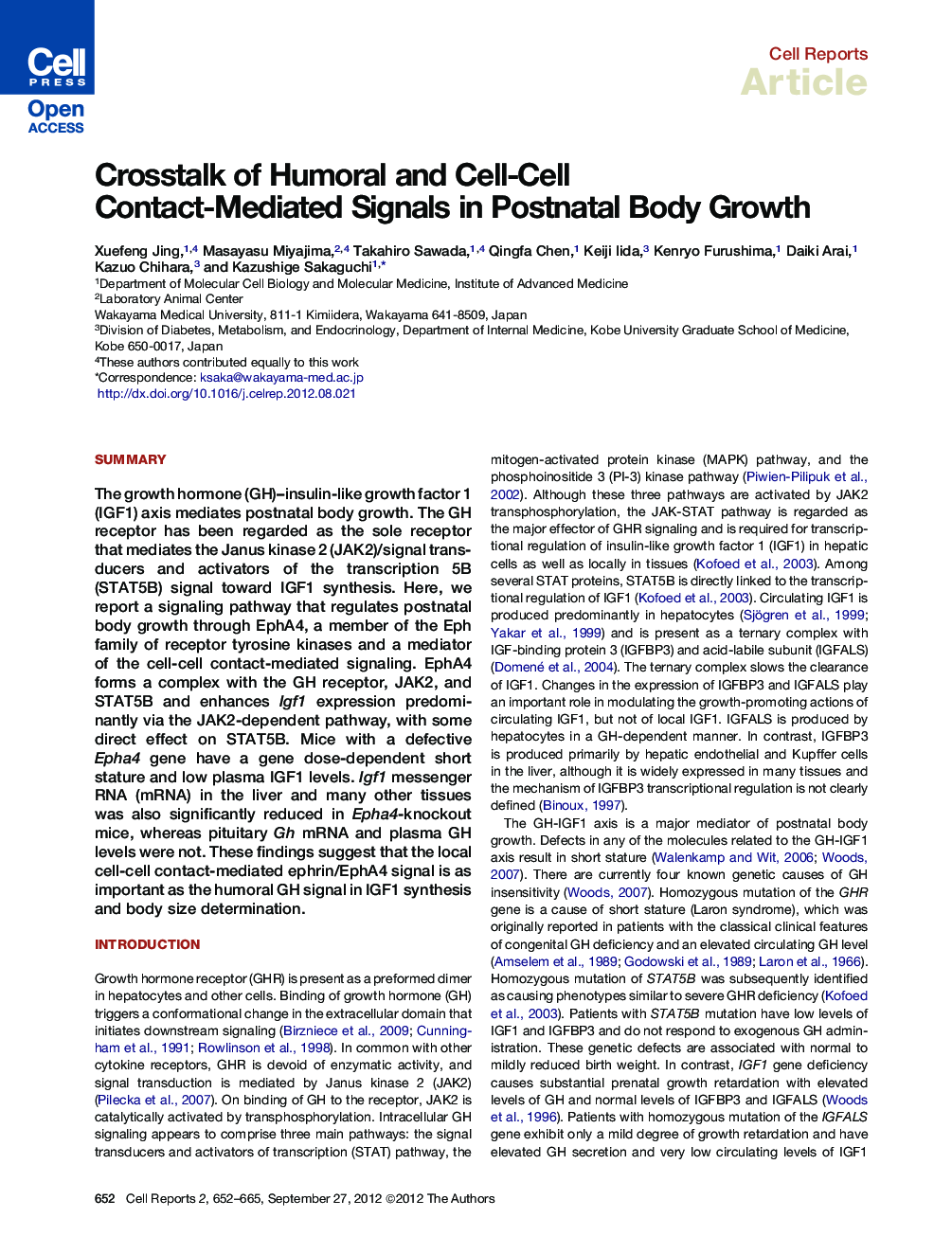| Article ID | Journal | Published Year | Pages | File Type |
|---|---|---|---|---|
| 2041651 | Cell Reports | 2012 | 14 Pages |
SummaryThe growth hormone (GH)–insulin-like growth factor 1 (IGF1) axis mediates postnatal body growth. The GH receptor has been regarded as the sole receptor that mediates the Janus kinase 2 (JAK2)/signal transducers and activators of the transcription 5B (STAT5B) signal toward IGF1 synthesis. Here, we report a signaling pathway that regulates postnatal body growth through EphA4, a member of the Eph family of receptor tyrosine kinases and a mediator of the cell-cell contact-mediated signaling. EphA4 forms a complex with the GH receptor, JAK2, and STAT5B and enhances Igf1 expression predominantly via the JAK2-dependent pathway, with some direct effect on STAT5B. Mice with a defective Epha4 gene have a gene dose-dependent short stature and low plasma IGF1 levels. Igf1 messenger RNA (mRNA) in the liver and many other tissues was also significantly reduced in Epha4-knockout mice, whereas pituitary Gh mRNA and plasma GH levels were not. These findings suggest that the local cell-cell contact-mediated ephrin/EphA4 signal is as important as the humoral GH signal in IGF1 synthesis and body size determination.
Graphical AbstractFigure optionsDownload full-size imageDownload as PowerPoint slideHighlights► EphA4 interacts with GHR, JAK2, and STAT5B, implicated in body growth ► EphA4 activates STAT5B directly and through a GHR/JAK2-dependent pathway ► Ephrin and GH synergistically function to increase IGF1 synthesis ► Deletion of the EphA4 gene reduces body size in a gene dose-dependent fashion
